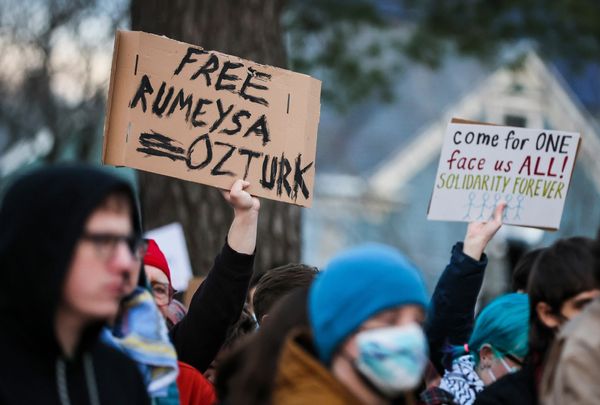
The climate for media and free speech in India is in a dangerous place. The country is already ranked 161 out of 180 countries in the press freedom index, but the actions of prime minister Narendra Modi’s government in the past few weeks have shown how many more clampdowns await. Desperately in need of distraction tactics – given the many failures in governance, tackling inflation or delivering jobs – the regime is after a fresh dose of sound and fury against political opponents.
And so a decade-old case has been dusted off, paving the way for initiating legal proceedings against the novelist, journalist and activist Arundhati Roy for comments she made in 2010 about Kashmir. The Kashmiri law professor Sheikh Showkat Hussain has also had charges against him approved. It comes after police raids on the homes of more than 40 journalists in Delhi and elsewhere. They have been slapped with terrorism charges and had their phones and laptops seized. They were working for NewsClick, a website accused of having funding links with China: a charge denied by both the website and its funders.
The original complaint against Roy is based on comments she made at a conference in New Delhi where she said Kashmir – the region disputed between India and Pakistan – has never been an “integral” part of India. Shorn of context, these words were used by the right to portray Roy as an “anti-national”. She has been charged for “offences related to provocative speech and the promotion of enmity between different groups”.
Unleashing the state machinery against Roy shows that the Modi regime has crossed the Rubicon. In millennial speak, no other Indian writer has similar flex on a global level. The legal proceedings set to be launched against Roy are therefore a testing ground. Once the regime realises that it can go after Roy without a big reaction, it’s open season on all publishers, editors and authors. What’s more, the scourge of self-censorship already tempers any potential criticisms of the state. Fear feeds our silences, but none of this makes headlines. The ripple effect of what will follow the public bullying of Roy is scary.

It will certainly embolden the vast troll armies that exist virtually, and their members and supporters who inhabit the streets. This won’t be just a one-off case – they will go after anyone who has made the slightest whimper of displeasure against the regime. I also fear that the ruling party, the BJP, and its affiliated student groups will take it to the next level. The last nine years of the regime has been replete with demands that the work of dissenters be removed from university syllabuses. Educational institutions will become the next contested site for rightwing bullying. Drawing strength from the action against Roy, they might disrupt peaceful meetings. Inspired by this case (and that of opposition politician Rahul Gandhi, who was disqualified from parliament before being reinstated), underlings of the regime would prove their loyalty and quench their thirst for publicity by using the legal machinery to file cases everywhere against those who criticise the ruling party.
So why is the government doing this now?
First, against the broader international backdrop of the intensification of the superpower rivalry between US and China, the Biden administration has made wooing India to its side a key part of its geopolitical strategy. US imperialism needs India as a regional bulwark against China – Modi’s visit to the US in June was pivotal from that perspective. Aware of its indispensability, Modi’s regime knows it can get away with a lot. In assuming that India has rising geopolitical (and to an extent economic) value for the west, the regime feels more confident to scale up its attacks against domestic political opponents without fearing too much backlash. Perhaps it has overplayed its hand.
Second, facing a groundswell of opposition and criticism across the country on many issues, the BJP does not want to leave anything to chance ahead of next year’s general elections. Unaffiliated to any political organisation, unafraid when the riot act is read to her, unflinching in her criticism of the corporate cronyism that underwrites the hate-mongering Hindutva political programme – Roy embodies an opposition to everything the BJP stands for.
Naomi Klein, John Cusack, Yanis Varoufakis – figureheads of the international left, openly addressing Modi on X (formerly known as Twitter), have asked him to keep his hands off Arundhati Roy. If the global outcry manages to reach a climax, the world’s unanimous outrage to protect its favourite literary hero might have the side-effect of protecting the dwindling remnants of free speech in Indian democracy. Within India, too, as an emboldened opposition under Rahul Gandhi seeks to consolidate itself, the attack on Roy might well transform into a national talking point. The ruling party has coined the advertising campaign of India being the “mother of democracy” to showcase itself globally – but the sheer optics of launching this petty attack on Roy might serve the purpose of galvanising public opinion against it.
Meena Kandasamy is a poet and writer based in Chennai







